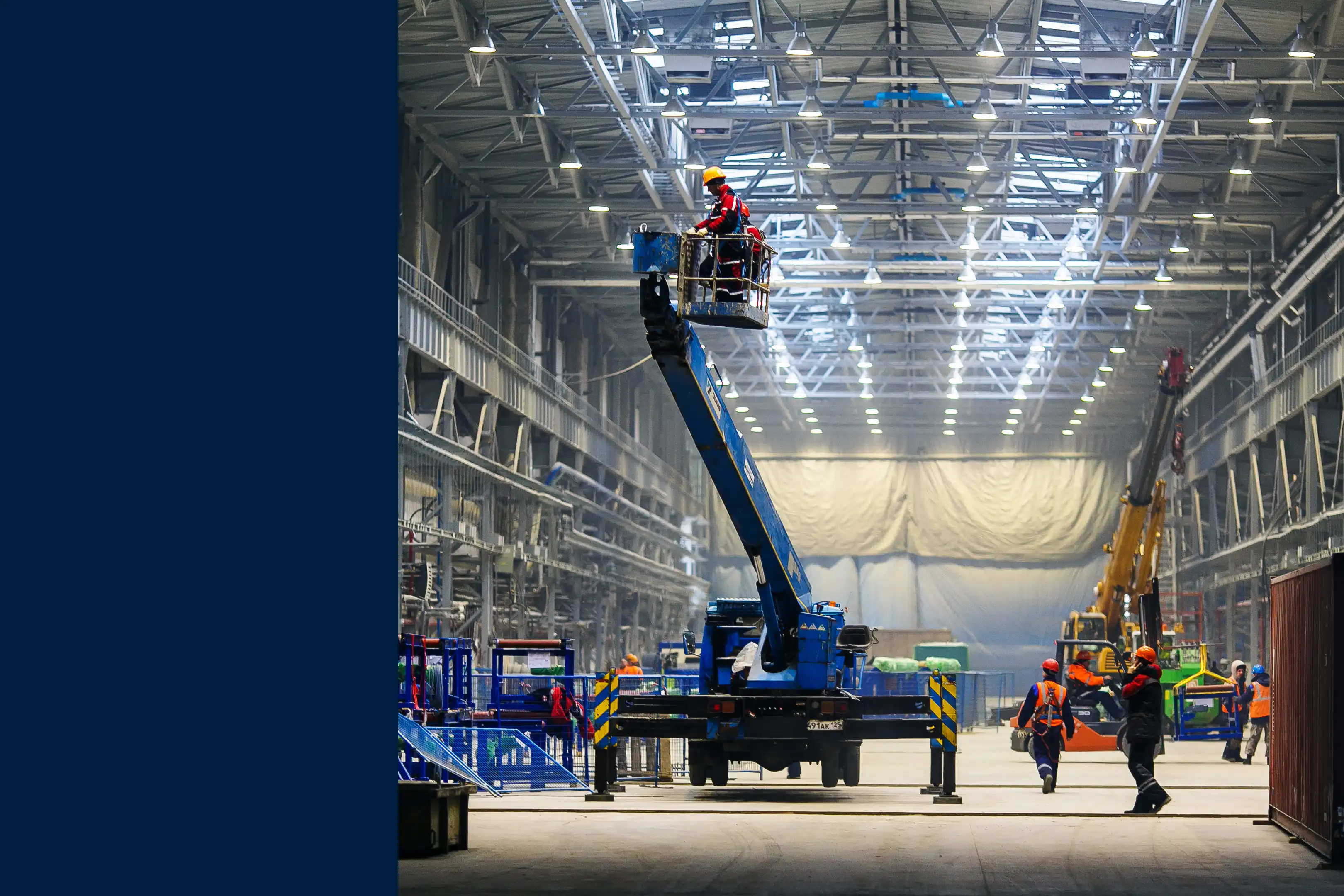
Ask any fleet manager, and they’ll tell you the cheapest repair is the one you never have to make. In a fleet of dozens of commercial vehicles, a single breakdown can lead to missed deliveries, idle crews, unhappy customers, and lost revenue.
In this guide, we help you get ahead of breakdowns with a preventive maintenance checklist for your commercial fleet.
Use the checklist as a starting point and edit it to fit your needs using a computerized maintenance management system (CMMS). Load your customized checklist into your CMMS, where technicians can mark tasks complete. This creates an audit trail for compliance and helps you track maintenance progress.
Key Takeaways
- Preventive fleet maintenance saves money and reduces downtime more effectively than last-minute repairs.
- Manage your fleet maintenance checklists in your CMMS to consolidate and streamline maintenance efforts and build an audit trail for compliance.
- Track critical metrics and usage patterns to optimize fleet performance, maintenance efforts, and time vehicle replacements.
- A mobile-first CMMS is the best way to streamline records, manage maintenance operations, collaborate with multiple teams, and generate insightful fleet maintenance reports.
How to use this fleet maintenance and vehicle inspection checklist
To keep things simple, we’ve broken down the checklist items into five timeframes: weekly, monthly, quarterly, semi-annual, and annual.
Our checklist assumes you’re running a mixed fleet that includes both heavy equipment and on-road vehicles. Treat this checklist as a framework. Add, remove, or adapt items based on your fleet and compliance requirements.
Your drivers and equipment operators can handle some of these, but make sure you assign critical tasks to your in-house maintenance crew or trusted service providers.
Daily fleet maintenance checklist
For all assets:
Weekly fleet maintenance checklist
For road vehicles:
For heavy equipment:
Monthly fleet maintenance checklist
For road vehicles:
For heavy equipment:
Quarterly fleet maintenance checklist
For all assets:
Semi-annual fleet maintenance checklist
For all assets:
Annual fleet maintenance checklist
For all assets:
How do you customize a fleet maintenance checklist to your needs?
Here’s how to customize our checklist for your fleet’s unique needs:
- Create an inventory of your assets: List every vehicle and piece of equipment along with make, model, year, and key specs. Add these details to your CMMS so you and your team can access this information as needed for maintenance activities.
- Review OEM recommendations: Follow the manufacturer’s recommended service intervals and maintenance procedures for each asset. Skipping them can often void warranties.
- Align checklist frequency with usage patterns: A truck running 2,000 miles a week needs more frequent safety inspections than a forklift used only in your yard. Adjust intervals based on each asset's usage to optimize maintenance costs.
- Check compliance and reporting requirements: Make sure your checklist includes all tasks required by the U.S. Department of Transportation (DOT), Occupational Safety and Health Administration (OSHA), and other industry-specific road safety standards, especially for vehicles used to transport passengers.
What are some fleet maintenance best practices?
Here are some best practices that will help you keep your fleet in good shape:
- Prioritize preventive maintenance over reactive repairs: Schedule regular inspections and maintenance to prevent and catch potential problems early. Proactively managing asset health reduces downtime and minimizes the need for costly emergency repairs.
- Track metrics and optimize: Monitor KPIs like downtime hours, maintenance cost, mean time to repair (MTTR), and mean time between failure (MTBF) to identify trends and optimize your maintenance strategy.
- Track cost-per-mile or cost-per-hour to identify underperforming vehicles: Older vehicles often take bigger bites out of your maintenance and repair budget. Track cost-per-mile and cost-per-hour to identify these underperformers and then decide whether it’s best to repair that vehicle, reassign it to a shorter route, or replace it.
- Use data to make repair vs. replace decisions: Tracking maintenance history in a CMMS shows how much you spend on maintenance and repairs for each asset. If your calculations suggest that replacing an asset would lower your maintenance and repair costs, replacement may make sense.

Digitize fleet maintenance with a mobile CMMS
Managing a large fleet requires juggling hundreds of moving parts. Tracking the inspection process, repairs, compliance requirements, and usage data on a spreadsheet can be overwhelming. It’s also tedious, time-consuming, and error-prone.
A mobile-friendly CMMS helps you take a more efficient approach to fleet maintenance. With a CMMS, you can centralize fleet data in a mobile app, schedule preventive maintenance, communicate with your technicians, and track fleet performance.
Regular inspections are just one of the ways a CMMS can help you increase uptime and manage costs. Visit our Fleet Maintenance page to learn more.
And don’t forget, our fleet service preventive maintenance checklist is available to download using the form above. Customize and share it with your team, or upload to MaintainX for seamless collaboration.
FAQs
What is the difference between fleet management and fleet maintenance?
Fleet management covers the overall operation of a fleet, including purchasing vehicles, routing, fuel usage, and ensuring compliance. Fleet maintenance focuses specifically on keeping vehicles in safe and reliable working condition through timely maintenance, regular vehicle inspections, and repairs.
What’s the best way to reduce preventive maintenance costs for your fleet?
The best way to reduce preventive maintenance costs for your fleet is to use a CMMS to automate and streamline your preventive maintenance program. A good CMMS helps you monitor the progress of each work order in real time, facilitates communication and collaboration, and automatically creates an audit trail for compliance.
How often should fleet vehicles be serviced?
Service frequency depends on the OEM’s recommendations and the vehicle’s usage, age, and operating conditions. Many fleets follow a mix of daily inspections, weekly checks, and scheduled maintenance every 5,000–10,000 miles or as advised by the OEM.
What’s the difference between preventive and predictive fleet maintenance?
Preventive maintenance is scheduled at regular intervals to prevent breakdowns. Predictive maintenance uses real-time data from sensors mounted on vehicles (or other assets) to monitor their condition and find anomalies based on variations in that data. Vehicles are serviced based on anomalies instead of a predefined schedule.
What is fleet maintenance software?
Fleet maintenance software, also called CMMS, is a digital platform that helps schedule preventive maintenance, track inspections, manage work orders, and store asset and maintenance data. It’s the modern-world, mobile-friendly replacement for spreadsheets.
What’s the best way to track fleet maintenance?
The best way to track fleet maintenance is by using a CMMS that allows you to schedule maintenance tasks, log inspections, monitor costs, and set up automated service reminders. Software prevents maintenance tasks from slipping through the cracks and keeps vehicles compliant and ready for use.








.png)